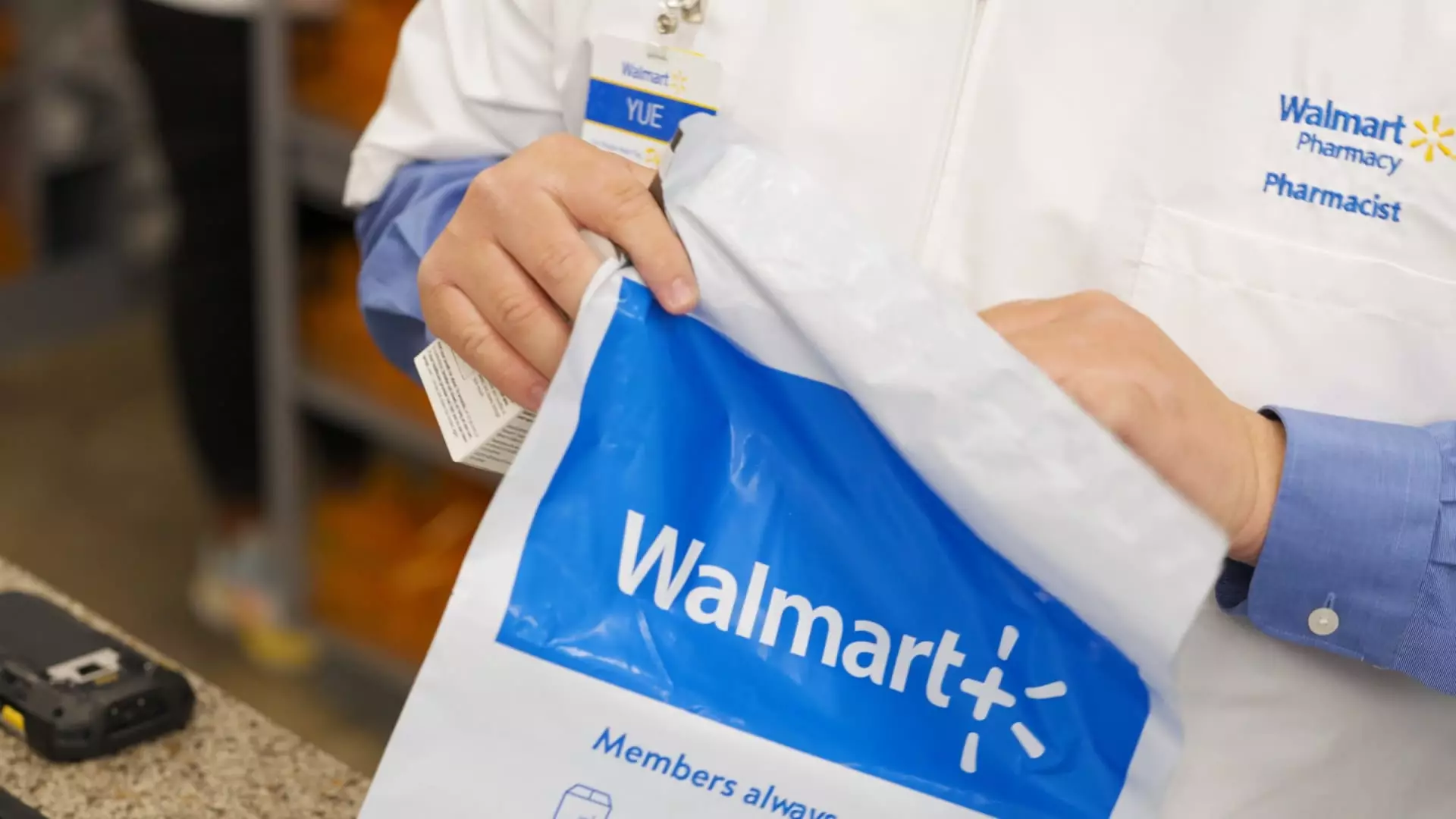In the ever-evolving landscape of retail pharmacy, the strategies employed by major chains are undergoing significant changes, primarily in response to shifting consumer expectations and competitive pressures. Amidst a backdrop of store closures from industry giants like CVS and Walgreens, Walmart is making headlines with its innovative approach to prescription delivery services. With plans to expand the delivery of prescriptions to homes across multiple states, Walmart is positioning itself to attract customers who seek convenience alongside competitive pricing.
Walmart’s recent announcement that it will offer prescription deliveries in six states—Arkansas, Missouri, New York, Nevada, South Carolina, and Wisconsin—marks a strategic initiative designed to enhance customer convenience. While the retail giant has historically focused on grocery items, its foray into health and wellness reflects a commitment to growing this lucrative sector, which already comprises approximately 12 percent of Walmart’s annual revenue.
Tom Ward, Walmart’s Chief E-Commerce Officer, noted that the launch of pharmacy delivery services stems directly from customer demand, citing it as the most requested service among their clientele. This feedback underscores a critical consumer trend toward convenience in product access, especially in a post-pandemic world where many have grown accustomed to online shopping and doorstep deliveries.
Unlike traditional drugstore chains, Walmart is leveraging its vast logistical network to offer a unique delivery option that allows customers to receive a blend of grocery and pharmacy items in one order. This multifaceted delivery system not only provides convenience but also positions Walmart as a formidable opponent in a sector that has seen declining profits for other major players.
The implications of Walmart’s new service extend far beyond consumer convenience; they also pose a significant threat to established pharmacy chain models. CVS and Walgreens are currently navigating tumultuous waters marked by declining revenues and increased competition from e-commerce platforms such as Amazon and from other retail giants. Stock performance reflects these struggles, with CVS and Walgreens experiencing significant declines over recent months.
While both CVS and Walgreens have previously offered varying levels of prescription delivery services, Walmart’s aggressive pricing and combination offerings could draw significant market share away from them. As CVS has been grappling with internal leadership changes and plans for large-scale store closures, the stakes are high. The recent departure of CVS CEO Karen Lynch, replaced by David Joyner amid investor pressure, illustrates the urgency of strategic reform efforts within traditional pharmacy sectors.
Walmart’s delivery service allows customers to obtain both new prescriptions and refills delivered to their doorsteps for a fee of $9.95, although Walmart+ members can receive this service at no charge. The approach also accounts for the importance of safety, incorporating tamper-evident packaging for medications and a consultation requirement for new prescriptions. This incorporation of safety measures not only enhances consumer trust but also aligns with regulatory expectations.
Additionally, customers can expect real-time tracking of their orders, making the process more transparent—an increasingly important factor in consumer choices today. These enhancements serve to not only improve the customer experience but also reflect Walmart’s adaptability in catering to an increasingly tech-savvy consumer base.
As Walmart thrives in this evolving retail space, the broader implications for drugstore chains cannot be overlooked. The decline in consumer favorability toward traditional pharmacies has prompted both CVS and Walgreens to rethink their strategies, leading to planned store closures that are aimed at curbing operational losses. With CVS’s planned closures of 900 stores and Walgreens strategizing to shutter around 1,200 locations in the coming years, traditional pharmacy models appear to be gradually waning.
Both chains find themselves hindered by reduced reimbursement rates for prescriptions and ongoing inflationary pressures impacting consumer spending. As Walmart continues to build on its delivery model, it challenges traditional paradigms of pharmacy operation, forcing competitors to evolve or risk being left behind.
Walmart’s strategic pivot towards prescription delivery embodies not only a commitment to customer convenience but also a significant shift in the pharmaceutical retail landscape. As the company seeks to enhance its foothold in the health and wellness sector, competitors like CVS and Walgreens are left to adapt or face potential decline amidst changing consumer behaviors. With an uncertain future for many traditional drugstore models, the emergence of Walmart’s delivery service might just be the catalyst for an industry-wide transformation. Retail pharmacy, as we know it, is poised for a dramatic reinvention.

Leave a Reply